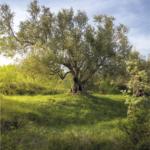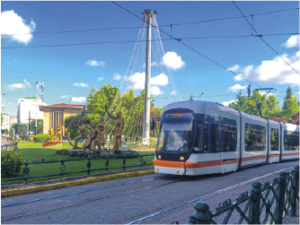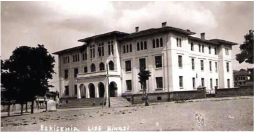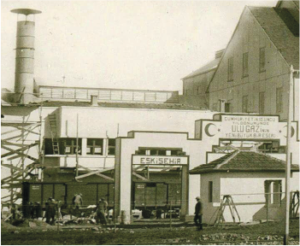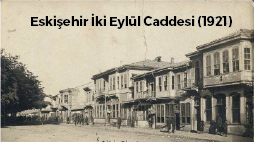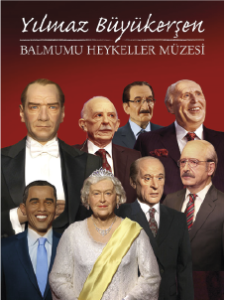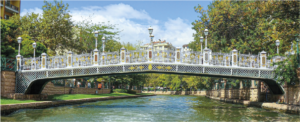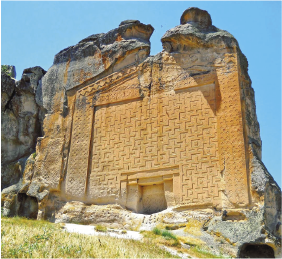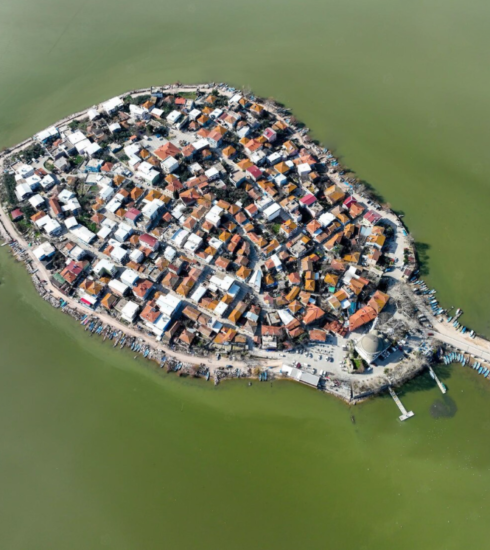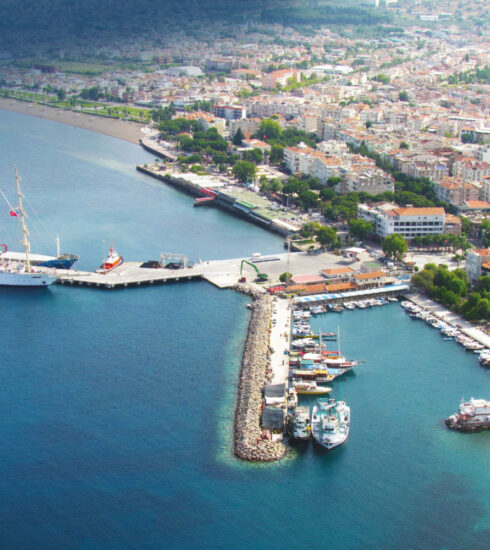Anadolu Bozkırının Modern Şehri; ESKİŞEHİR
Bundan 25-30 yıl kadar önce Eskişehir’e yolu düşmüş olanlar bilirler… Şehir, gri renge boyanmış binalarla dolu, toz, toprak içinde, kendi halinde yaşayan bir kent görünümündeydi.
Hitit, Frig gibi pek çok kadim uygarlığın meskeni, Yunus Emre’ lerin yurdu olan bu eski Anadolu kasabası, 2000’li yılların başından itibaren geçirdiği büyük değişimle yaşam kalitesi yüksek, zengin bir sosyal hayata sahip, öğrenci dostu, yemyeşil, modern bir şehir haline geldi. Günümüzde olduğu gibi tarih boyunca da önemli yolların kavşak noktasında yer alan Eskişehir, stratejik öneminden dolayı yüzyıllarca siyasi-askeri merkez olarak kullanılmış. Şehrin ilk yerleşim yeri, günümüz kent merkezine 3km uzaklıkta bulunan M.Ö.3500’lerden kalma “Şarhöyük” adı ile anılan bölge. Antik çağda burası “Dorylaion” kenti olarak anılırmış. Selçuklular’ın Sultan Höyüğü olarak adlandırdığı Eskişehir, Osmanlı İmparatorluğu zamanında Sultanönü sancağının merkezi haline getirilmiş. 18.yy’ın ilk yarısı ile birlikte lületaşı ticareti ve Bağdat demiryolu hattının Eskişehir’den geçmesi ile ekonomik ve sosyal yaşamda gelişmeler olmaya başlamış. Nüfus artmış.
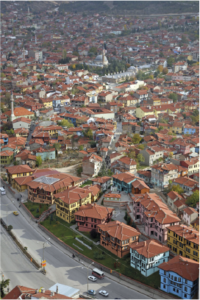
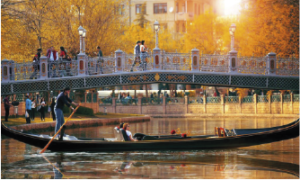
1893-1894 yıllarında Almanlar, burada vagon tamiri için Anadolu-Osmanlı Kumpanyasını inşa etmişler. Ardından ailelerini de Eskişehir’e getirince zamanın şık giyimli Alman kadınları tren garı civarındaki sokaklarda gezmeye başlar olmuş. Böylece şehir, Avrupa kültürü ile tanışmaya, canlanmaya başlamış.
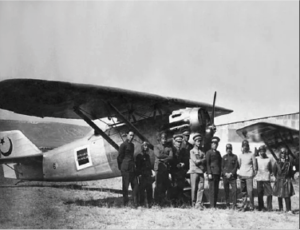
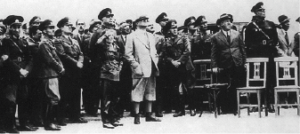
Eskişehir, Kurtuluş Savaşı’nda önemli rol oynayan şehirlerimizden biri olmuş. 1. İnönü Muharebesi’ne sahne olan şehir, Sakarya Meydan Savaşı’nın kazanılması ile 2 Eylül 1922’de işgalden kurtulmuş. İşgalin ardından şehir yok olma noktasına gelmiş. 15 Ocak 1923 günü Mustafa Kemal Paşa’nın gelişi Eskişehir’in kaderini değiştirmiş. Mustafa Kemal Paşa, yeni yolların ve okul binalarının yapılması, hayvan ıslahı, hastalıklardan korunma, ormanların haritalandırılması, tohum dağıtılması gibi konularda şehrin ve şehir insanının kalkındırılması için çalışmalar başlatmış. İki ay içinde tren hattı onarılmış. Yangından zarar gören su ve elektrik tesisatı yeniden döşenmiş. Özellikle şehir merkezinde yanan binalar yerine taş binalar inşa edilmiş. Eskişehir, Cumhuriyetle birlikte kalkınmaya başlamış. 1925 yılında il olmuş. Tarım merkezli şehir, ticaret ve sanayi kenti olma yolunda hızla ilerlemiş. Almanlar tarafından kurulan Anadolu Osmanlı Kumpanyası, 1920 yılında Kuvayi Milliye tarafından milli hale getirilerek adı Cer Atölyesi olarak değiştirilmiş. 1920’de Müdafai Milliye Umumi Harbiye Dairesi tarafından Hava İstasyon Komutanlığı kurulmuş. Günümüzde, 1. Ana Jet Üs Komutanlığı olarak anılan bu birim, kurtuluş savaşında sahip olduğumuz sınırlı sayıda uçaklarla vatana hizmet etmiş. 1926’da uçak tamir atölyeleri, 1933 yılında ise Türkiye’nin dört şeker fabrikasından biri açılmış. Bunları, sonraki yıllarda açılan çimento fabrikasını ve Sümerbank basma fabrikası izlemiş.
Fabrikalarla dolan şehre çalışmak için binlerce insan akın etmiş. Nüfus bir hayli artmış. Özellikle Cer Atölyesinin büyümesi ile artan işçi nüfusu ve onların ailelerini barındırmak amacıyla şehirde tek katlı, bahçeli evlerin olduğu işçi mahalleleri kurulmuş. Bu mahallelerde yer alan spor tesisleri, lokaller ve çocuk parkları ile çağdaş şehirciliğe adım atılmış. Cumhuriyetin kuruluşundan beri ekonomik anlamda önemli bir misyon üstlenen Eskişehir, Eti bisküvi fabrikası, Arçelik, TUSAŞ uçak motor fabrikası gibi tesislerin açılması ile gelişmeye devam etmiş. Günümüzde Eskişehir, 2000’li yıllar sonrası geçirdiği değişimle gelen kaliteli sosyal yaşam ve planlı şehircilik sebebiyle “yaşamak için tercih edilen şehirler” arasında ön sıralarda yer alıyor. Özellikle üniversiteye gidecek gençler, bu şehri tercih ediyorlar. O nedenle Eskişehir’de genç nüfus fazla. Burası, öğrenci şehri olarak da anılmakta. Şehirde Anadolu Üniversitesi, Osmangazi Üniversitesi ve Eskişehir Teknik Üniversitesi yer alıyor. Üniversite Araştırmaları Laboratuvarınca 81 ildeki 199 üniversite arasında yapılan “Öğrenci Dostu Üniversite Şehirleri” araştırmasına göre Eskişehir, 5. kez birinci seçildi. Bunun sebepleri arasında, şehirde ulaşımın kolay olması, öğrencilerin sağlık sorunlarını rahatca giderebilmeleri, esnafın öğrencilere karşı sıcak davranışı, sanat, kültür ve spor faaliyetlerinin çeşitliliği, kiraların öğrenciler için uygunluğu gibi etmenler yatıyor. Üniversitelerle sanayi kuruluşları arasında yapılan anlaşma doğrultusunda hemen hemen her hafta söyleşi ve konferanslar düzenleniyor. Bu durum, öğrencilerin kariyerleri için bulunmaz fırsat yaratmakta. Ayrıca, şehirde saat kaç olursa olsun rahatça dolaşabiliyorsunuz. Öğrenciler Eskişehir’de kendini güvende hissederek huzurla yaşayabildiklerini söylüyorlar. Eskişehir’in bir diğer özelliği de göçmen şehri olması… Şehirde yerli halk Türkmenler dışında 1859 yılı itibarıyla aralıklarla göç ederek gelen Abaza, Çerkez ve Tatarlar yer almakta. Bunların bir kısma Kafkasya’dan, bir kısmı Kırım’dan, diğer bir bölümü de Yugoslavya ve Bulgaristan’dan gelmiş.

Göçmenler, geldikleri bölgelere özgü kültürel yapıyı da beraberlerinde getirerek Eskişehir’i her alanda derinden etkilemişler. Onların gelişi ile yeni yerleşim yerleri; mahalleler, köyler kurulmuş. Tarım arazileri açılmış; böylece tarımsal üretim artmış. Meslek sahibi olanlar sayesinde yeni meslekler ortaya çıkmış. Gelişen şehrin işçi ihtiyacı göçmenlerle karşılanmış. Şehir, zengin bir mutfağa sahip olmasını da bu göçmenlere borçlu. Böylesine köklü ve zengin bir tarihe, hareketli kültürel ve sosyal yapıya sahip olan Eskişehir’i gezmek isterseniz sizi pek çok alternatifin beklediğini görürsünüz.
Porsuk Çayı ve Adalar: Yıllar önce pislikten geçilmeyen ve pek çok atığın bırakıldığı Porsuk Çayı ve adalar, temizlenip ıslah edildikten sonra Eskişehir’in en canlı en keyif verici yerlerinden biri olmuş. Buraya şehrin kalbinin attığı yer diyebiliriz. Gondol ya da tekne gezileri yapabileceğiniz Porsuk Çayı ve üzerinden geçen köprüleri sizi bambaşka bir diyara götürüyor. Dinlenmek isterseniz kıyıdaki eğlence ve yeme- içme mekanlarına gidebilir, burada şehrin modern yüzüne tanık olabilirsiniz.
Sazova Parkı: Özellikle çocuklu ailelerin keyifli dakikalar geçireceği bir yer olan park, masal şatosu ve korsan gemisi ile büyük ilgi çekiyor.
Odunpazarı Evleri: Tarihi mekânları sevenler şehrin en eski yerleşim bölgesi olan Odunpazarı’nda geçmişi yaşayabilirler.
Eskişehir Balmumu Heykel Müzesi: Pek çok ünlünün balmumundan yapılmış heykelinin bulunduğu müze şehrin ilgi çeken turistik yerleri arasında yer alıyor.
Kurşunlu Camii Ve Külliyesi: Tarihi Odunpazarı evlerinin hemen yanında bulunan 16. yy. dan kalma bu eser, Osmanlı Devleti vezirlerinden Çoban Mustafa Paşa tarafından yapılmış.
Atlıhan Çarşısı: 1850 yılında yapılan ve han olarak kullanılmış olan bu mekan günümüzde el sanatları çarşısı olarak hizmet veriyor. Burası, lüle taşının tanıtım ve pazarlanması amacıyla açılmış. Dünyada lületaşının çıkarıldığı tek yer Eskişehir. Eskişehir’e gelmişken, bu nadide taştan yapılmış eserleri almak isterseniz Atlıhan Çarşısını ziyaret edebilirsiniz.
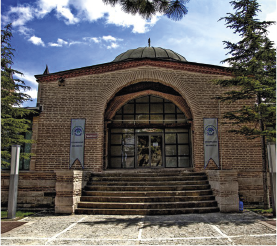

The Modern City of the Anatolian SteppeThe Modern City of the Anatolian Steppe
Those who went to Eskişehir 25-30 years ago knows… The city looked like a city full of gray-painted buildings, living in dust and soil, on its own. This old Anatolian town, the home of many ancient civilizations such as the Hittites and Phrygians, and the homeland of Yunus Emre, has become a student-friendly, green, modern city with a high quality of life, a rich social life, with the great change it has undergone since the beginning of the 2000s. . LOCATED AT THE CROSSROADS OF IMPORTANT ROADS THROUGHOUT HISTORY AS IT IS TODAY, ESKIŞEHIR HAS BEEN USED AS A POLITICAL-MILITARY CENTER FOR CENTURIES DUE TO ITS STRATEGIC IMPORTANCE. THE FIRST SETTLEMENT OF THE CITY IS THE AREA KNOWN AS “ŞARHÖYÜK” DATING BACK TO 3500 BC, WHICH IS 3 KM AWAY FROM THE PRESENT CITY CENTER. IN ANCIENT TIMES, THIS PLACE WAS KNOWN AS THE CITY OF “DORYLAION”. Eskişehir, which was called Sultan Mound by the Seljuks, was turned into the center of the Sultanönü sanjak during the Ottoman Empire. With the first half of the 18th century, with the meerschaum trade and the Baghdad railway line passing through Eskişehir, economic and social life began to develop, and the population started increasing.
In 1893-1894, the Germans built the Anatolian-Ottoman Company for the repair of wagons here. Then, when they brought their families to Eskişehir, the elegantly dressed German women of the time began to wander the streets around the train station. Thus, the city began to meet the European culture and grow. Eskişehir became one of our cities that played an important role in the War of Independence. The city, which was the scene of the 1st Battle of İnönü, was liberated from occupation on September 2, 1922, with the victory of the Battle of Sakarya. After the occupation, the city came to the brink of destruction. The arrival of Mustafa Kemal Pasha on January 15, 1923 changed the fate of Eskişehir. Mustafa Kemal Pasha started works for the development of the city and the people of the city, such as the construction of new roads and school buildings, animal husbandry, protection from diseases, mapping of forests, and seed distribution. Within two months, the train line was repaired. The water and electrical installations damaged by the fire were re-installed. Especially in the city center, instead of wood that tend to catch fire, stone buildings were built. Eskişehir started to develop with the republic. It became a province in 1925. The agriculture-centered city has rapidly progressed towards becoming a city of commerce and industry. Founded by the Germans, the Anatolian Ottoman Company was nationalized by the Kuvayi Milliye in 1920 and its name was changed to Cer Atelier. In 1920, the Air Station Command was established by the Defense Ministry General War Department. Today, this unit, known as the 1st Main Jet Base Command, served the country with the limited number of planes we had in the War of Independence. Aircraft repair shops were opened in 1926 and one of Turkey’s four sugar factories was opened in 1933. These were followed by the cement factory opened in the following years and the Sümerbank printing factory.
Thousands of people flocked to the city full of factories to work. The population has increased considerably. Especially with the growth of Cer Atelier, workers’ quarters with single-storey houses with gardens were established in order to accommodate the increasing worker population and their families. With the sports facilities, clubs and playgrounds in these neighborhoods, a step towards contemporary urbanism has been taken. Having undertaken an important economic role since the foundation of the republic, Eskişehir continued to develop with the opening of facilities such as Eti biscuit factory, Arçelik and TUSAŞ aircraft engine factory. Today, Eskişehir ranks among the “preferred cities for living” due to the quality social life and planned urbanism that came with the change it went through after the 2000s. Especially young people going to university prefer this city. Therefore, the young population in Eskişehir is high. It is also known as the student city. Anadolu University, Osmangazi University and Eskişehir Technical University are located in the city. According to the “Student Friendly University Cities” research conducted by the University Research Laboratory among 199 universities in 81 provinces, Eskişehir was chosen first for the 5th time. Among the reasons for this, there are factors such as the ease of transportation in the city, the ability of students to solve their health problems easily, the warm behavior of shopkeepers towards students, the diversity of arts, culture and sports activities, and the suitability of rents for students. In line with the agreement between universities and industrial organizations, talks and conferences are held almost every week. This creates a unique opportunity for students’ careers. In addition, you can easily walk around the city no matter what time it is. Students say that they can live peacefully in Eskişehir by feeling safe. Another feature of Eskişehir is that it is a city of immigrants. Apart from the local people Turkmen, there are Abaza, Circassian and Tatars who migrated intermittently as of 1859 in the city. Some of them came from the Caucasus, some from the Crimea, and some from Yugoslavia and Bulgaria.
Immigrants have deeply influenced Eskişehir in every field, bringing with them the cultural structure specific to the regions they came from. With their arrival, new settlements; Neighborhoods and villages were established. Agricultural lands were opened; Thus, agricultural production increased. New professions have emerged thanks to those who have a profession. The labor needs of the developing city were met by immigrants. The city owes its rich cuisine to these immigrants. If you want to visit Eskişehir, which has such a deep-rooted and rich history, vibrant cultural and social structure, you will see that many alternatives await you. Porsuk Stream and the Islands: After being cleaned and rehabilitated, the Porsuk Stream and the islands, which were polluted and filled with waste years ago, became one of the liveliest and most enjoyable places in Eskişehir. This is the place where the heart of the city beats. Porsuk Stream, where you can take gondola or boat trips, and the bridges that cross over it, take you to a completely different land. If you want to relax, you can go to the entertainment and eating and drinking places on the coast, and witness the modern face of the city here.
Sazova Park: A place where families with children can spend pleasant moments, the park attracts great attention with its fairy tale castle and pirate ship.
Odunpazarı Houses: Those who love historical places can experience the past in Odunpazarı, the oldest residential area of the city.
Eskişehir Wax Sculpture Museum: The museum, which houses wax sculptures of many famous people, is among the tourist attractions of the city.
Kurşunlu Mosque And Complex: 16th century, located right next to the historical Odunpazarı houses. This work from the Ottoman Empire was made by Shepherd Mustafa Pasha, one of the viziers of the Ottoman Empire.
Atlıhan Bazaar: This place, which was built in 1850 and used as an inn, serves as a handicraft bazaar today. It was opened for the purpose of promotion and marketing of meerschaum. Eskişehir is the most significant source of meerschaum in the world. While you are in Eskişehir, if you want to buy these precious stone works, you can visit Atlıhan Bazaar.
Meerschaum Museum:
Located within the borders of Odunpazarı district, this museum has the title of being the only museum in its field in Turkey. Also known as the “Eskişehir stone”, the museum, which contains artifacts made of this stone, is located within the Kurşunlu Mosque and Complex.
Hamamyolu Street: This street was arranged by the Odunpazarı Municipality and closed to traffic. The street, which also has thermal water resources, has received many architectural awards in the international arena.
Şeyh Edebali Tomb: A tomb was built in Eskişehir for Şeyh Edebali, who died in 1326 at the age of 125 in Bilecik and was buried there. The tomb is located in the Odunpazarı cemetery.
Nasreddin Hodja House: Located in the Hortu town of Eskişehir’s Sivrihisar district, the house is a place you can add to your visit list.
Midas Monument: The Midas Monument, is located in Yazlıkaya Village, which has an elevation of 1315m. The monument, which was built in the 600s B.C., is from the Phrygian civilization and is 80 km from Eskişehir…
Şarhöyük: This is the first settlement where Eskişehir was founded. 3 km from today’s city center. away. Located on the fertile Eskişehir plain, the mound was known as Dorylaion in ancient times.
Şucaeddin Veli Tomb: One of the spiritual guides of Anatolia, Şucaeddin Veli lived in the first half of the 15th century. The mausoleum is located in Arslanbeyli village, 7km from Seyitgazi District centre.
Yunus Emre Tomb and Complex: One of the many tombs claimed to belong to Yunus Emre is located in the Mihalıççık district of Eskişehir. This place was opened by the Ministry of Culture in 1974.

